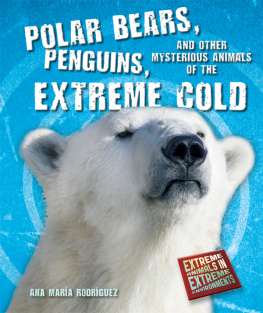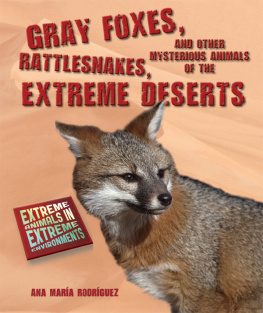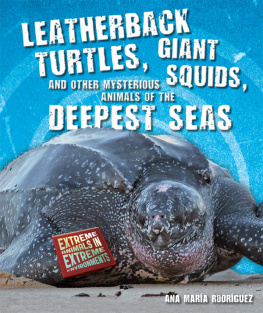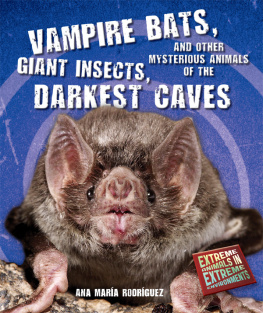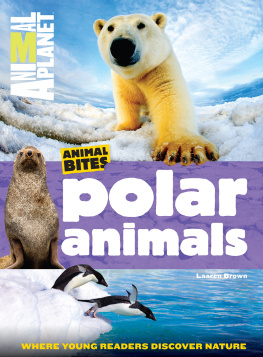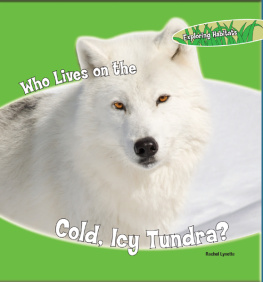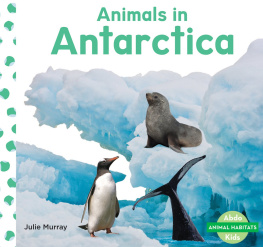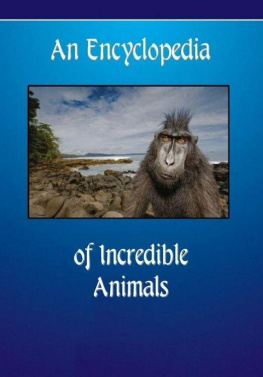EXPLORE THE EXTREME ANIMALS OF THE EXTREME COLD!
The Arctic and Antarctica are two of the most extreme environments in the world. They are freezing cold, windblown, lip-cracking dry, and pitch-black for half of the year. But despite these extreme conditions, many magnificent animals call these icy worlds home. Scientists have been amazed and curious about how animals survive in such extremely cold places with limited food. To find out, they have been traveling to the icy worlds to study these extreme animals. Their hard work has revealed incredible findings!
ABOUT THE AUTHOR
ANA MARA RODRGUEZ was a scientist doing research in immunology and other biological sciences for over twenty years. She is currently a full-time writer with twenty books published.
Cold, terrible cold:
At -50C a flashlight dies in his hand;
at -55C kerosene freezes;
at -60C rubber turns brittle and snaps
Robert Burleigh, from Black Whiteness, 1998

Image Credit: 2011 Photos.com
The Arctic and Antarctica are two of the most extreme environments in the world. The Arctic is located at the northernmost region of the world, while Antarctica is on the southernmost region of Earth. The North Pole is located in the Arctic Ocean and the South Pole is in Antarctica.
They are freezing cold, frostbite windy, lip-cracking dry, and pitch-black for half of the year. Despite these extreme conditions, many magnificent animals call these icy worlds home.
Polar bears, penguins, whales, seals, arctic foxes, rabbits, a myriad of insects, birds, fish, plants, and microbes are some of the creatures that live in the icy worlds. Most people, however, would have a hard time surviving there. How do animals do it?
Scientists have been amazed and curious about how animals survive in such extremely cold places with limited food. To find out, they have been traveling to the icy worlds to study these extreme animals. Their hard work has revealed amazing animal adaptations.
- The coldest air temperature recorded so far is -132 Fahrenheit (-91Celsius) at the Vostok Russian research station, Antarctica, in 1997.
- Antarctica is also the driest place, receiving no precipitation at all for months in a year.
- The fastest winds ever recorded roared over Antarctica in 1972. They traveled at 200 miles per hour (322 kilometers per hour), which is faster than catastrophic Category 5 hurricanes.
- Antarctica is the highest continent. It rises 1.4 miles (2.2 kilometers) above the sea.
Many types of animals live in the icy worlds. However, not many live there permanently. Some animals migrate to warmer lands during the winter and return during summer. They avoid the most extreme conditions they are not adapted to survive in. Many migratory birds, such as geese, and mammals, such as caribou, use this strategy.
Other animals hibernate in an underground shelter to avoid the freezing weather and the lack of food. Hibernating is a deep sleeplike state during which the animals body functions slow down. The body temperature drops, and the animal does not need to eat or even defecate. It is warmer inside the underground shelter than it is outside. This helps animals not to freeze. The ground squirrel hibernates in the Arctic.

Image Credit: 2011 Photos. com
The arctic fox, like the polar bear, spends its life in the Arctic. Its white fur helps it blend into its surroundings.

Image Credit: Melanie Conner / National Science Foundation
The Antarctic cod does not freeze thanks to antifreeze proteins in its blood.
The most extreme animals of the Arctic and Antarctica live there permanently and stay active. The masters of the icy worlds are the polar bear, a mammal of the Arctic, and the emperor penguin, a bird of Antarctica.
The polar bear and the emperor penguin are successful because they stay warm, find enough food, and have babies under conditions many other animals find deadly. One key reason for their success is that both are endotherms, or warm-blooded.

Image Credit: 2011 Photos
Reindeer migrate south of the Arctic in the winter and return in the spring.
Like all other mammals and birds, polar bears and emperor penguins maintain their body temperature with the heat produced by their body or metabolism. Their body temperature remains the same regardless of how cold it gets. This is the opposite of ectotherms, or cold-blooded animals, whose body temperature is determined by the environment. Reptiles, insects, amphibians, and fish are ectotherms. When it gets extremely cold, ectotherms cannot keep their bodies warm enough to move around to find food. They must leave for a warmer place, enter hibernation, or have another adaptation to survive.
Read on and discover where polar bears and emperor penguins come from. How did they end up living in extremely cold environments? And how did they become the masters of the icy worlds?
- They receive a fraction of the solar energy other parts of the world receive because the Earth is tilted as it revolves around the sun.
- White snow and ice reflect, or bounce back, about 85 percent of the solar energy they receive. This is the albedo effect. Darker ground, on the other hand, absorbs a larger amount of solar energy that warms it up.
- For about half of the year, there is more darkness than light. At the poles, it is daylight for six months during summer, and it is dark during winter.
- It can get very windy. Fast winds cause a wind chill effect, which drops temperatures significantly. A temperature of -40F (-40C) will feel like -86F (-65C) if the wind is blowing at 45 mph (72 kmh). Antarctica is the windiest place on Earth.

Image Credit: 2011 Photos. com
The amazing icy landscape of Antarctica.
More than 200,000 years ago, there were no polar bears on Earth. Polar bears are related to brown bears that ventured into the Arctic during the ice age called the Pleistocene. To survive in this extreme environment, the ancestors of the polar bear changed some of their physical characteristics and habits over a long period of time.
The Pleistocene age occurred between 2 million and ten thousand years ago.
Thousands of years ago brown bears living on the Arctic mainland, from Siberia to Nunavut in Canada, explored northern territories looking for food. During winter, the bears could move back to warmer southern lands.

Image Credit: 2011 Photos.com
The polar bears ancestor probably looked a lot like this grizzly bear. Grizzly bears are a subspecies of the brown bear.

